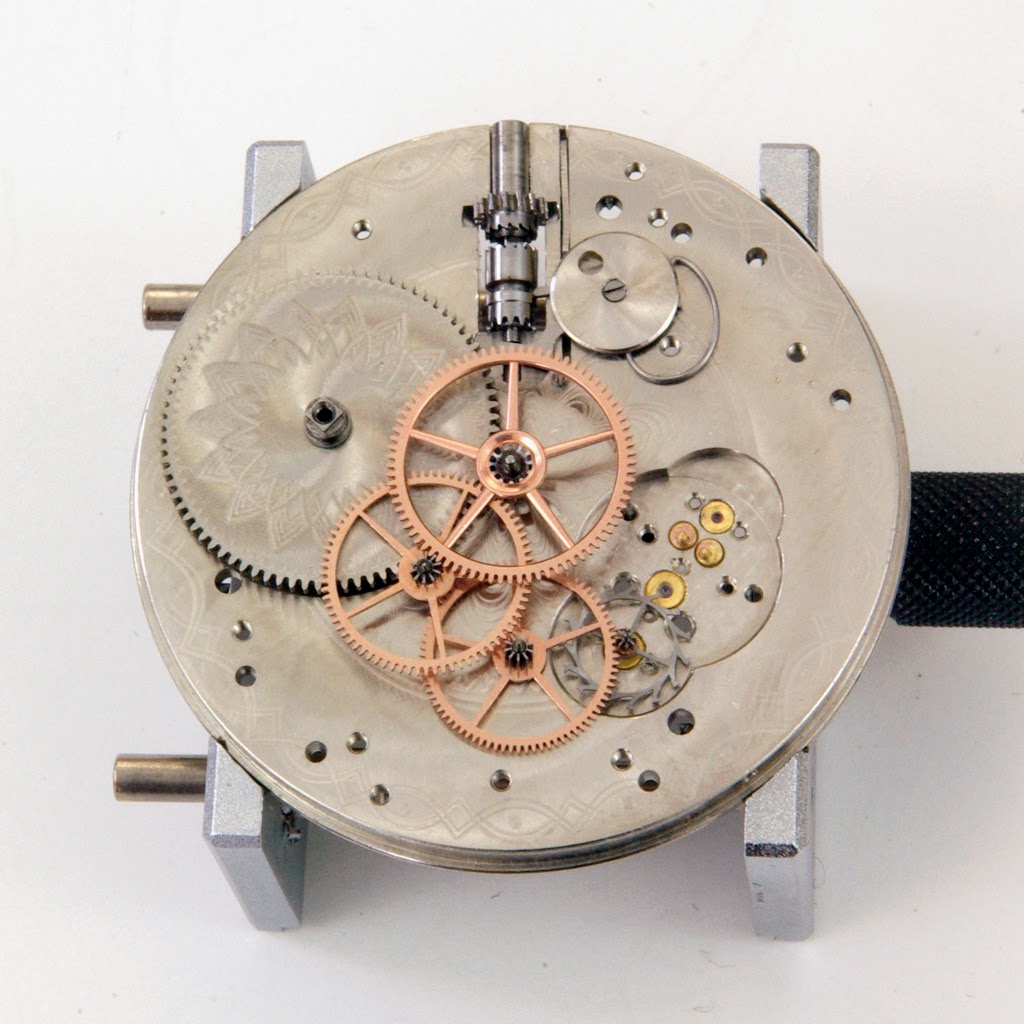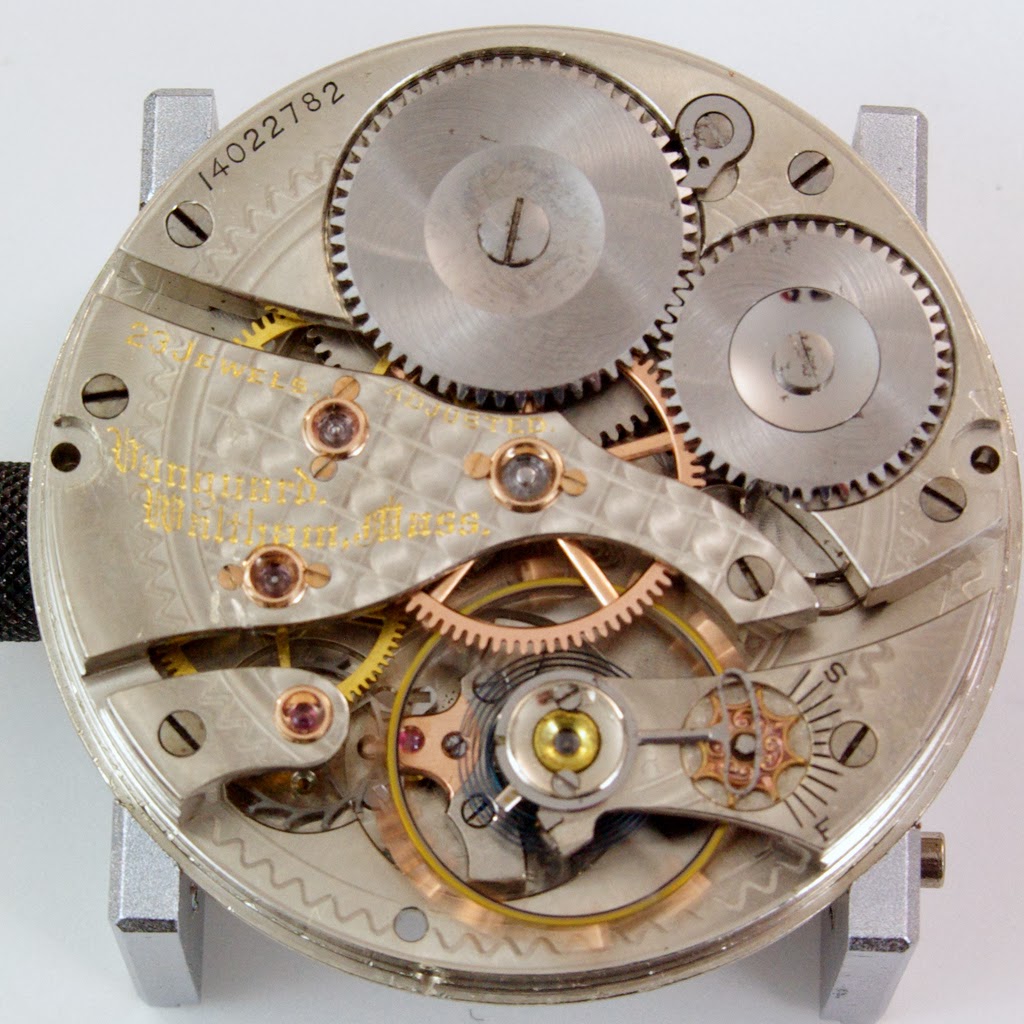The is the top grade watch made by J.W. Benson at their Ludgate Hill factory in London, hence the branding "The Ludgate".
It was in a sorry state when it arrived and needed quite a bit of TLC to get it back into good condition including fitting a new mainspring, finding and fitting a replacement setting arbor (the time could not be set), a few adjustments, a lot of cleaning and the removal of a previous repair which is the subject of this post.
The movement has a true English Lever escapement with an over-sprung cut-compensating balance and 13 jewels. From the picture you can see the patented ring that sits between the case and the movement and which hold the dust cover.
After opening it up I found that some serious damage had occurred
in the past. The picture to the right shows the under-dial as it is now, after I removed and made good the previous repair.
Notice the large gear too the right is pinned to its "shaft" which is in fact the mainspring arbor, the winding key is applied to the other end of the small gear wheel which turns the larger gear which winds the spring, this is done so that the watch can be wound anti-clockwise as was normal for the Fusee watches still then in production (just).
At some point in its career, probably pre war by the condition of the watch, the mainspring winding arbor had broken, probably by a watch repairer trying to lever off the gearwheel when the retaining pin had stuck in - that will work with the brass pins most people use but not with a steel pin, finding one of those is bad news as they will rust and jamb.
To rescue the watch he then had a lot of work to do, probably to avoid a difficult conversation with his customer! And its because of this sort of potential problem that I do not do work on other peoples watches.
After grinding the broken end of the arbour flat but leaving just enough of the square shoulder to locate the gear on the arbor, he drilled into the end of the arbor - a tricky operations as the small hole is over half the diameter of the arbour, tapped it and then screwed the gear to the arbour as shown.
I was very tempted to leave this repair but the attachment was a little precarious and as I had a spare arbor from a scrapped "Ludgate" which would fit, not as common an occurrence as you might think, I replaced the arbour and gear wheel.
.JPG)

.JPG)
.JPG)
.JPG)
.JPG)
.JPG)


.JPG)
.JPG)
.JPG)



.JPG)
.JPG)



.JPG)
